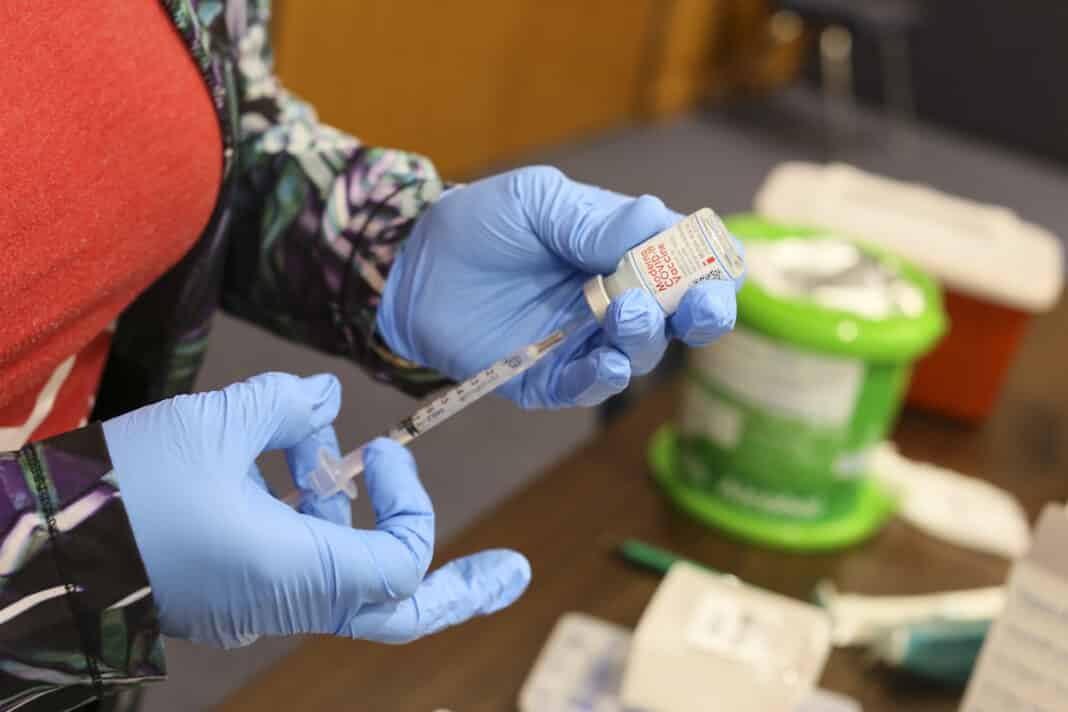Nearly a month ahead of schedule, the Rio Grande Valley surpassed the goal set by President Joe Biden to have more than 70% of all adults receive at least one dose of a COVID-19 vaccine.
As of Wednesday, more than 74% of all Valley residents, aged 16 and older, received at least one dose of a COVID vaccine, far surpassing the rate of the state as a whole which is at 57%, according to data from the Texas Department of State Health Services.
In early May, Biden set a nationwide target of getting 70% of all adults to receive at least one dose of the vaccine by July 4 and while the state remains short of that goal, three out of the four counties in the Rio Grande Valley have already reached it.
Of all Hidalgo County residents aged 16 and older, more than 73% have received at least one dose and about 62% have been fully vaccinated.
Cameron County is faring slightly better with 75% adults having received at least one dose and 63% fully vaccinated.
Starr County is outpacing both, with more than 80% of adults having received one dose and more than 71% now reported as fully vaccinated.
Willacy County is the only county in the Valley that has not reached the 70% goal with just over 57% reported as having received at least one dose and about 46% reported as fully vaccinated. Similarly, the number of people 16 and older who have been fully vaccinated is about 47%.
When looking at the entire population, regardless of age, about half of Rio Grande Valley residents, 56%, have received at least one dose and about 46% are fully vaccinated.
Hidalgo County had similar vaccination rates, reporting that about 55% of their entire population received at least one dose and about 45% were fully vaccinated.
Vaccine providers in Cameron County reported that about 57% of the county’s entire population had received at least one dose and about 47% were now fully vaccinated.
Of Starr County’s entire population, 60% had received at least one dose and just over 52% were fully vaccinated.
Willacy County trailed the four counties with 47% of their population having received at least one dose and about 37% now fully vaccinated.
For comparison, of the state’s nearly 29 million Texans, about 45% have received at least one dose and only 37% have been fully vaccinated.
While the Valley maintains some of the highest rates of vaccinations throughout the state, it’s unclear how much more success providers will have in vaccinating the rest of the population given the dropoff in administrations.
During the week of April 5 through April 11, providers administered a high of 1,871,098 vaccine doses but, since then, vaccine administrations have steadily declined from week to week.
In the Rio Grande Valley, providers administered 116,608 doses during that same week in April. The administering of vaccinations in the Valley fell to 87,024 doses the following week and have only continued to fall every subsequent week.
During a news conference call held Tuesday, Dr. Emilie Prot who serves as regional medical director for DSHS Public Health Region 11, said the decrease in administrations is at least partly explained by groups of people who remain hesitant about the vaccine.
“I think there’s those who were always on the fence from the beginning regarding vaccination so those are people who it might be hard or it might take more time for them come around to get their vaccine,” Prot said.
“There’s some who will never get the vaccine but our target is still to reach those who might need more information or might need that extra push from a family member or maybe they don’t have access or don’t have transportation or don’t know where to go,” Prot said of health officials’ continued efforts to vaccinate more people. “So I think that it’s definitely making sure that people have the information that is needed for them to understand the effectiveness of how the vaccine can protect them and to really dismantle and make sure that they are not getting any information that is false.”
“We want to make sure that people are informed,” she added, “make sure that they know where to get the vaccine and making it accessible to them.”




